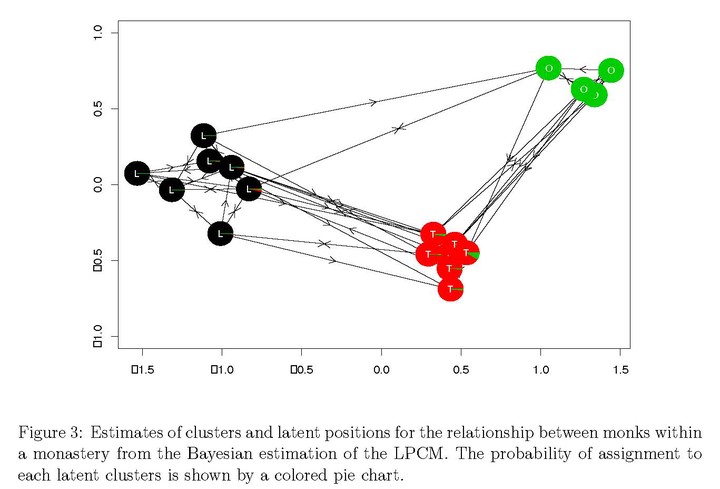
Abstract
Network models are widely used to represent relations among interacting units or actors. Network data often exhibit transitivity, meaning that two actors that have ties to a third actor are more likely to be tied than actors that do not, homophily by attributes of the actors or dyads, and clustering. Interest often focuses on nding clusters of actors or ties, and the number of groups in the data is typically unknown. We propose a new model, the Latent Position Cluster Model (LPCM), under which the probability of a tie between two actors depends on the distance between them in an unobserved Euclidean social space, and the actors’ locations in the latent social space arise from a mixture of distributions, each one corresponding to a cluster. We propose two estimation methods: a two-stage maximum likelihood method, and a Bayesian MCMC method; the former is quicker and simpler, but the latter performs better. We also propose a Bayesian way of determining the number of clusters present using approximate conditional Bayes factors. It models transitivity, homophily by attributes and clustering simultaneously, and does not require the number of clusters to be known. The model makes it easy to simulate realistic networks with clustering, potentially useful as inputs to models of more complex systems of which the network is part, such as epidemic models of infectious disease. We apply the model to two networks of social relations.